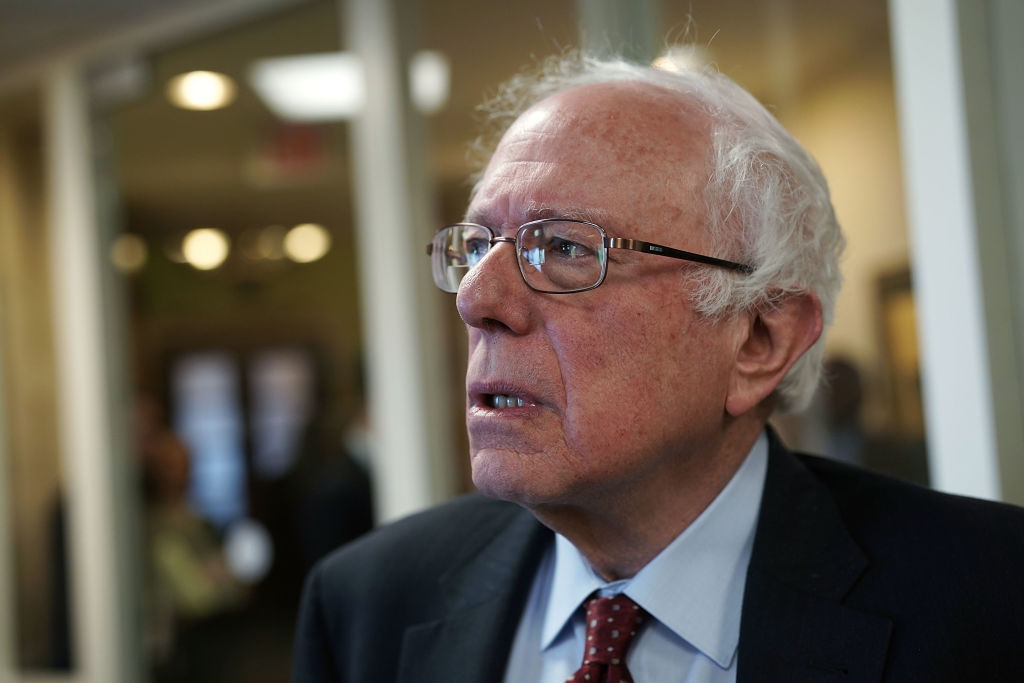‘Medicare for all!’ The Sandersistas’ refrain is increasingly becoming the voice of the Democrat party. However economists at George Mason University’s Mercatus Center have taken it upon themselves to do what Old Comrade Bernie won’t: put a price on the Senator’s single-payer health care plan. The study found that the Act, also referred to as M4A, would add $32.6 trillion in ten years to the federal budget, assuming the plan is implemented by 2022.
That’s nearly twice our annual GDP, 54 times our annual defense spending, over eight times our annual federal budget, 281 times the private sector’s annual medical research and development, and 867 times the federal government’s annual medical research and development investment.
Naturally, Dylan Scott of Vox accused me of “jumping” on a figure that he claims proves the single-payer plan is “actually kind of a bargain.” In the same vein, Matt Bruenig of Jacobin touted the study – partially funded by newly minted Trump foes Charles and David Koch, lest the left lets you forget – as evidence that Medicare for All would “virtually eliminate out-of-pocket health care expenses while saving $2 trillion in the process.”
In other words, Berniecare must be the greatest thing since four-hour-long Soviet sliced bread lines, right?! Not so fast.
The first point is the obvious yet more banal one: that it would be impossible to fund single-payer without astronomical tax increases.
When asked by the not remotely conservative Trevor Noah how to pay for progressive plans such as free college and Medicare for All, congressional candidate and the Democratic Socialist celebrity du jour, Alexandria Ocasio-Cortez, cited a carbon tax, closing tax loopholes for the ultra-wealthy, and cutting – you guessed it – defense spending. By her own estimation, that’s roughly $3 to $4 trillion over the course of ten years. Only $20 something trillion to go.
The study’s authors point out that even doubling both individual and corporate tax rates would not fund single-payer. The American people would have to be willing to stomach enormous increases in their income taxes for single-payer to ever be really funded.
Secondly, you have to realise that the $32.6 trillion price tag is a vast underestimate, for a multitude of reasons. The GMU economists indicate their valuation understates the likely future cost because their methods assume the Act “achieves its sponsors’ goals of dramatically reducing payments to health providers, in addition to substantially reducing drug prices and administrative costs.”
Third, Medicare for All has the same economic pitfall as Obamacare. That is, artificially inducing demand with zero incentives to induce supply. Rather than increase payments to health care providers, the study’s authors came to the $32.6 trillion value assuming that hospitals and physicians would take home a reimbursement rate 40 per cent lower than contemporary private insurance, twice that of today’s average reimbursement discrepancy of 20 per cent. By catapulting demand while slashing payments to providers, the George Mason University study either dramatically underestimates the necessary cost to keep providers in the health care market or even worse, predicts a catastrophic shortage entirely.
The study also estimates $83 billion in administrative costs would be saved by transitioning to single-payer. A single visit to the DMV would argue otherwise.
All of this ignores the trillions of dollars lost in medical research and development if the United States turned away from a profit-driven model of health care. Yes, universal health care works to a degree in small, ethnically and culturally homogenous nations such as Switzerland and Finland. However, for all of Big Pharma’s flaws, American investment in health care research has allowed the entire developed and developing world to tag along as free riders. The Lancet Medical Journal found that the U.S. spends three times more per capita on medical R & D than the progressive paradise of the E.U.
Besides, there’s only one state that’s ever even come close to enacting single-payer in the States. In 2011, Governor Peter Shumlin of Vermont signed the nation’s first single payer bill into law. Vermont, the progressive bastion of ethnic and ideological homogeneity, was more apt than any other state to take on the endeavor, which could have looked like a magnified version of California’s gradual imposition of plurality public coverage. Following the Affordable Care Act expansion, one in three Californians gained Medi Cal – the state’s Medicaid program – coverage. The program has proven a cash cow for Medi Cal insurers, with their profits exploding from close to zero prior to the ACA expansion to earning an aggregate $5.4 billion in profits from 2014 to 2016. None of this is to say that these profits have translated to better care. As noted by the Kaiser Health News, Anthem and Centene, the two most profitable insurers, “run some of the worst-performing Medicaid plans” in the state.
Of course, Vermont’s system in practice may have manifested itself a little differently than the Champagne Socialist Coast. We’ll likely never know. Governor Shumlin scrapped the single-payer plan in 2014 because, alas, it was too expensive.

























